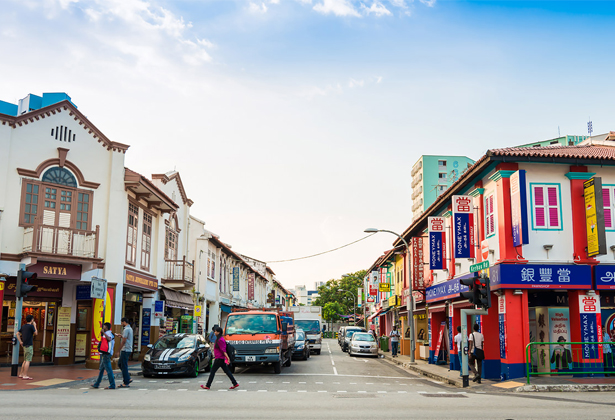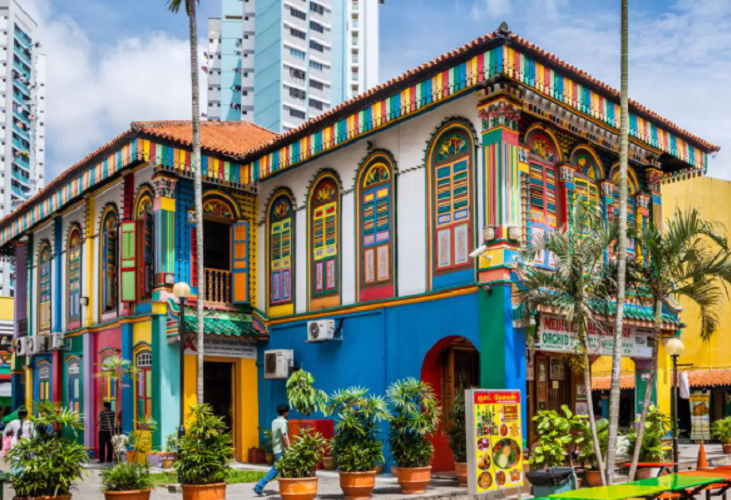Little India is one of the districts with the most unique culture and history on the Lion Island, and to this day, people living in in Little India retains its unique heritage. After countless wanderings with tourists, along with a thorough research process, today, Bestour will introduce to you A-Z information about Little India, the heart of India in the heart of Singapore
1. History of the formation of Little India in Singapore
The history of the formation of Little India and China Town are both related to one person – who is also considered the father of the lion island nation – Sir Stamford Raffles. Stamford Raffles was the British colonial deputy governor. When he arrived in Singapore in 1819, he realized that this island had a strategic location to establish a port, a place to transship goods on the trade route between India and India. India and China.
Under the persuasion of Stamford Raffles with the country, the trading post in Singapore was officially established, creating many jobs and also creating electricity for Indians to import. live.
Not allocated separate lands like China Town or Kampong Glam, Indian immigrants live scatteredly in the Serangoon River area in the northeast of the lion island nation, where there is land and water sources suitable for grazing cows and growing raw materials, even rice. However, many Indians were hired as horse and cattle workers for the Europeans who lived in Little India today, and as time went on, the number of Indians in this area grew. And formed the Indian sub-region as it is today

2. Some special features about Little India
Considered a protected area since 1989, Little India contains many historical stories. After a period of research, Bestour would like to present new information about this Indian sub-region
2.1 Little India is not part of the plan to form residential clusters for Indians
In fact, today’s Little India area was a former European settlement area. However, this area became a place specializing in trading livestock such as cows and horses and also grew a horse racetrack. Interestingly, cattle herding is a traditional Indian profession, as a result many immigrants are hired to work in Little India. Later, European people returned to their homeland, leaving this land for the Indians. Many of today’s streets in Little India still bear the old names given by Europeans such as: Dunlop, Cuff Street, Dickson Street and Clive Street.

2.2 Serangoon Road in Little India is the road with the oldest history in Singapore
Serangoon Road is considered the backbone of Little India. Since the 19th century, the Serangoon Road was built to connect settlements to the Serangoon River port. Later, Serangoon Road was considered a road across the island. Today, it is considered Singapore‘s oldest road
2.3 Meaning of Tekka
Many people call Little India Tekka area, because Tekka market is so famous with Singaporeans. So what does Tekka mean? First, a market was built in 1915 at the foot of the bamboo bushes and was named “Tek Kia Kha” which means at the foot of the bamboo bushes. Later, it was shortened to Tekka

2.4 There are many giant paintings in Little India
Containing many cultural features and possessing many artisans, there are many giant street paintings in Little India, which both depict traditional culture and brings visual effect can’t miss

3. How to get to Little India
The fastest and most economical way to reach the Indian sub-region is to use the Singapore MRT system. You can directly go to Little India station sign NE7–DT12, and exit from exit D
4. Little India- Singapore travel guide
One of Singapore’s most colorful historical districts, Little India has a captivating mix of new and old, with contemporary street art alongside temples ancient. Once wandering with Bestour’s tour guide, we will take you to experience all the charms of this two-century-old land
4.1 Visit Sri Veeramakaliamman Temple
Sri Veeramakaliamman Temple is Singapore’s first Hindu temple, worshiping the Goddess and Destroyer of Demons, Goddess Sri Veeramakaliammann or Goddess Kali
It can be said that Sri Veeramakaliamman Temple has been the spiritual fulcrum of the Indian community in the lion island for two centuries. From the first days setting foot on the island, immigrant workers built the temple as a place of prayer, bringing back a sense of peace in the new land
During World War II, most Indians chose Sri Veeramakaliamman Temple as a place of refuge, and prayed to Kali for protection. It is unclear whether it was due to luck or the sacredness of the goddess, but the entire temple and the Indians were left intact after suffering many large-scale bombings by the Japanese fascists.
Today, Sri Veeramakaliamman has been repaired and renovated many times, not only as a place of prayer, but also as a place for community activities of Indians during anniversaries. Hinduholiday

4.2 Tan Teng Niah Ancient House
Built in the 1900s, Tan Teng Niah ancient house is the only remaining Chinese villa in Little India. Mr. Tan is Chinese, owns many candy factories in India, and built this 8-room house for his wife.
The ancient house of Tan Teng Niah is not only a testament to the fact that there were once prosperous Chinese businesses in Little India, which was once the center of the cattle industry. , cows, horses), but also marks the unique architectural style that blends Southern China, India and Europe
This colorful old house was restored and put on the conservation list in 1980, and is currently a popular tourist attraction in the Indian sub-region

4.3 Enjoy a traditional lunch
Traditional Indian lunch is placed on a banana leaf, with familiar dishes such as fish head curry and spicy chicken, eaten with white rice. Local people often use their hands to roll rice into balls, dip them in curry sauce, and eat them with chicken. To enjoy a lunch like this, go to Banana Leaf Apolo Restaurant – No. 48 Serangoon Road

4.4 Hang out at Little India Arcade
Built in 1920, Little India Arcade is a gathering place of shops, restaurants, and entertainment stalls with bold Indian identity. Once wandering at Little India Arcade, you will not only see products imbued with Indian identity: colorful fabric stalls, socks spice stalls.





